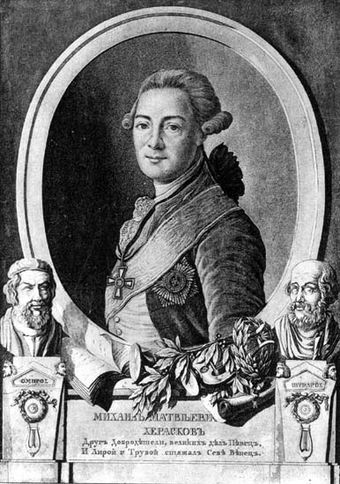Vysotsky Wiki
Anatoly Lavrentyevich Vysotsky (August 8, 1924, Putivl district, Sumy region, Ukraine - October 15, 1996, Kyiv, Ukraine) was a Soviet and Ukrainian artist working in the style of social realism. Vysotsky was born in 1924 in a military family in the Putivl district, Sumy region. Vladimir Vysotsky dia mpilalao, Poeta, mpanoratra, mpitendry mozika mizaka ny zom-pirenen'i Firaisan'ny Repoblika Sosialista Sovietika teraka ny 25 Janoary 1938 tao Moskva ary maty ny 25 Jolay 1980 tao Moskva. Ny fiainany manokana. Ny vadiny dia Isa Vysotskya, Lyudmyla Abramova, Marina Vlady.
The Museum of Vladimir Vysotsky in Koszalin (Polish: Muzeum Włodzimierza Wysockiego w Koszalinie) is a private museum dedicated to Russian singer and actor Vladimir Vysotsky in Koszalin, Poland.[1][2][3][4]
History[edit]
The museum was started by enthusiast, author, and publicist Marlena Zimna (1969 – 2016) in May 1994 in her apartment. The base collection is Marlena's, which she began to collect in 1984. The initial collection had 300 exhibits, and has since grown to over 19,500 exhibits from different countries.[5]
Collection[edit]
The collection holds poet's personal items, autographs, drawings, drafts, letters, photographs, unique film footage, vinyl records, CDs, DVD, a large library, a video library, artistic productions dedicated to Vysotsky, posters, playbills, theater pamphlets, documents, bookplates, postal stamps, and even items made in accordance with the well-known principle of 'three K' (commerce, conjuncture, kitsch): dolls matryoshkas 'Vysotsky', matchboxes with a portrait of the poet, stereo greeting card, calendars, and even plastic bags.
Poem on guitar[edit]
A special place in the collection takes guitar, on which Vysotsky played at a concert in Casablanca in April 1976. It was stored by Moroccan journalist Hassan El-Sayed, to whom Vladimir presented it together with an autograph, a paraphrase of Vysotski's song 'What Happened in Africa' (Что случилось в Африке), written on the guitar:
- Original Russian text
- В желтой жаркой Африке,
- Забыв мороз московский,
- Как-то вдруг вне графика
- Выступил Высоцкий.
- English translation
- In the yellow hot Africa,
- Forgetting about Moscow frost,
- Outside his schedule
- Vysotsky gave a concert.
- Africa, Casablanca, 1976, April. To Hassan from Volodya. [Signature].
Activities[edit]
Among the activities of the museum - dedicated to the 30th anniversary of the death of Vysotsky's concert in Koszalin with participation polish stars, including Daniel Olbrychski (2000), the annual International Festival of Documentary Films about Vladimir Vysotsky 'Pasje według świętego Włodzimierza' ('St. Vladimir Passions') with participation film directors, screenwriters, the bibliographers by Vladimir Vysotsky, musicians, singers, actors from different countries (since 2003), International project of translations by Vysotsky poems in languages of the world (so far carried out 114 translations of poems and songs in 157 languages with participation 62 poets and translators from 26 countries).
On May 29, 2014, the 20th anniversary, a private Vladimir Vysotsky Institute (Polish: Instytut im. Włodzimierza Wysockiego) was established based on the museum.[5]
See also[edit]
References[edit]
- ^'Кому - Куршевель, а кому - Кошалин'. Rg.ru. Retrieved 2016-10-27.
- ^'Музей Высоцкого в Кошалине'. Vagante.ru. Archived from the original on 2015-04-02. Retrieved 2016-10-27.
- ^'Vysotsky in new translations'. Wysotsky.com. Retrieved 2016-10-27.
- ^'Vladimir Vysotsky - Museum Parade'. Wysotsky.com. Retrieved 2016-10-27.
- ^ ab'Włodzimierz Wysocki ma swój instytut w Koszalinie', Gazeta Wyborcza, May 29, 2014 (Retrieved December 8, 2016)
Coordinates: 54°11′22″N16°11′05″E / 54.1895°N 16.1847°E

Vysotsky Monastery (Russian: Высоцкий монастырь) is a walled Russian Orthodox monastery commanding the high left bank of the Nara River in Serpukhov, close to its confluence with the Oka. Its name stems from the Russian word for 'heights'.
The monastery was founded in the 1370s by Vladimir the Bold and long served as a border fortress defending the southern approaches to Moscow from the Tatars. The first hegumen, Afanasy the Elder, was a disciple of St. Sergius of Radonezh, whose successor, St. Nikon of Radonezh, is believed to have been tonsured a monk in this monastery.
After the Russo–Crimean War (1571), which saw the monastery reduced to ashes, it was restored on a grander scale. The five-domed Cathedral of the Conception dates from that building campaign, financed by Ivan the Terrible. The cathedral was almost certainly preceded by a medieval limestone church of which little is known.
In the mid-17th century the monastery was fortified with stone walls and four corner towers. It rivalled the Vladychny Monastery as the most important shrine of Serpukhov and welcomed rich patrons wishing to be buried within the monastery walls. Among those buried there are Gavrila Golovkin, the Chancellor of Peter the Great, and Fyodor Soimonov, the Governor of Siberia. The Neoclassical belfry was completed in the 1840s.
The monastery celebrated its 500th anniversary with the construction of the All Saints church, designed by Roman Klein in a fashionable Neo-Byzantine style. The church was destroyed after the Russian Revolution, when the monastery was given over to the Latvian Riflemen to be used as barracks. By the end of the Soviet period the monastery had lost most of its walls and was very dilapidated.
Restoration work on one of the greatest monasteries of the Moscow region started immediately after its return to the Russian Orthodox Church in 1991. Repairs were made in the Church of the Nativity of the Theotokos, dating from the 17th century and containing an icon screen and royal doors from the 16th century. Reconstruction of the missing sections of the wall is in prospect.
The modern monastery derives its prosperity from the venerated copy of the icon of the Inexhaustible Chalice, which attracts hundreds of pilgrims from all over Russia and abroad. The icon is said to be particularly effective in the treatment of alcoholism.[1]
References[edit]
- ^Akathist to the Most Holy Theotokos in honour of the icon of the Inexaustible Cup, translated by Sister Dorofea (Mirochnitchenko) and Katherine Szalasznyj, The History of the Icon, Ottawa, Ontario, Canada, Orthodox Research Institute.
Coordinates: 54°54′6″N37°25′9″E / 54.90167°N 37.41917°E
